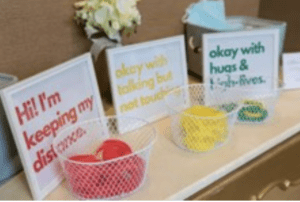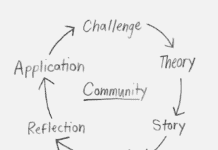
Meetings etiquette, or the basic behaviors expected from those who attend, staff and service meetings and events, is more important now than ever as we begin to regroup in person post-pandemic.
It’s no secret that most aspects of civic and social life in the U.S. is becoming more polarized and divisive. In-person meetings and events historically have been considered to be safe havens from trolling, harassment and generally unkind behavior as like-minded professionals come together to help each other find solutions to common challenges.
Yet most of us could use a meetings etiquette refresher — we’re all a little out of practice after hunkering down, avoiding face-to-face contact and interacting mainly online over the past two and a half years since the COVID-19 pandemic first shut down live events. This makes meetings etiquette more important than ever.

“The last two years have been challenging for everyone. People have different levels of comfort with our reopening world and it’s important we respect each other’s needs and wants,” Arden Clise, etiquette and customer service speaker, trainer, coach, author and owner of Clise Etiquette told Event Source Professionals, Inc. President Charlotte Davis, CMP, Terry Onustack, CMP, and Lori Lortscher, CGMP in a post on the company’s Event Source Professionals website.
This means that meetings etiquette may look a little different than it did in 2019 as we continue to work our way through the pandemic’s waxing and waning. But one meetings etiquette basic remains the same. As Clise says, “We’ll all be happier and more productive if we can be gracious, kind and understanding.”
Event Etiquette Tips for 2022
Here are some meetings etiquette tips to consider as we return to live events, reprinted with permission from Event Source Professionals:
- Respect: Follow the rules of the venue and host organization. They are doing their best to accommodate different and varying needs and circumstances. The employees are rarely the rule makers but must enforce the decisions of others.
- Be considerate: Be understanding of those wearing masks. Some are immunocompromised or live with others at high risk. Some work with or care for the elderly, or children who are still ineligible for the COVID vaccine. Teasing them or questioning their motives doesn’t alleviate their concerns.
- Ask permission: Although it may feel awkward, when greeting someone ask if it is okay to hug or shake hands. Or as Clise says, “If you aren’t comfortable shaking hands, be prepared with an alternative greeting and be intentional about it. If you prefer an elbow bump, put your elbow out as soon as you’re close enough to the person to bump.”
- Speak up: If someone is too close, kindly ask for more room. Phrases such as, “Could I please have a little more space? I’m still trying to maintain some distance,” can help avoid uneasiness. Event planners might consider using the “traffic light” system, which utilizes different colored wristbands or lanyards to let other attendees know at a glance your level of comfort.
 RED – not comfortable with close contact;
RED – not comfortable with close contact;
YELLOW – avoiding contact but happy to chat;
GREEN – okay to approach, shake hands, talk without masking.
- Be aware: Avoid touching unnecessary objects — there is no need to touch four cans of Diet Coke to take one.
- Cover up: When coughing or sneezing, covering your mouth and nose with a tissue, handkerchief, or if nothing else, your elbow joint, is a must. Immediately discard used tissue and sanitize your hands. While this is nothing new, extra vigilance during this heightened time of awareness may relieve angst and stress of some fellow attendees.
And finally, Clise warns, “Avoid asking someone about their vaccination status as a topic of conversation. This should be a need-to-know question, only to ensure your safety and that of the other person. Don’t ask because you’re curious or want to get into vaccine politics, which may not go over well.”
While the specifics of meetings etiquette may have changed to meet the unique needs of this unique point in time, it boils mostly boils down to long-time basics: treating others with respect, kindness and with regard to their own personal boundaries. These are not new ideas, but they are newly essential in today’s changed, and evolving world.
You May Also Be Interested In
Inspired Events Summit Sparks Fresh Ideas
Learning by Doing: A New Way to Achieve Meeting ROI
3 Easy Ways to Engage Attendees (Without Spending a Lot of Money)










